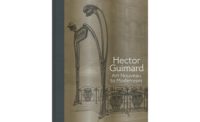Madrid
Using raw primary materials such as concrete and galvanized steel, simple forms, and an adroit manipulation of scale, the Madrid-based architect Héctor Fernández Elorza gives even small projects a monumental authority. Two horizontal glass slashes across the facade of his Faculty of Cellular and Genetic Biology at the University of Alcalá, for example, transform the rows of diminutive offices and seminar rooms behind them into a mysterious, iconic mask, while deeply projecting concrete planes shade the interior spaces from the western sun. At a larger scale, in the Valdefierro Park outside his native Zaragoza, long concrete retaining walls emerge from the hillside like the ruins of a lost city.
After graduating from the Escuela Técnica Superior de Arquitectura de Madrid, Elorza spent two years in Stockholm studying the work of Gunnar Asplund and his disciple Sigurd Lewerentz, and he credits particularly the latter for showing him how the tactile quality of materials can become the protagonist of a design. But he translates this lesson from the Swedish context of fine craftsmanship in wood and masonry to the more brutish realities of low-budget public construction in Spain. Valdefierro is a case in point, where he saved money by reusing the tons of demolition rubble that filled the site as aggregate for its concrete walls and then raked their surfaces with a trench-cutting machine to create a coarse, irregular finish that vibrates under the strong local light.
That strategy exemplifies Elorza's drive to find the “opportunity” in each project within what generally presents itself as an obstacle. In the university building, that opportunity was the direct western exposure of its facade. And when restoring a chapel for a cultural center in the small town of Jarandilla de la Vera, he reused the wood substrate of the building's ruined roof as a richly textured formwork for the new concrete walls, floor, and ceiling inside the space.
With its formal austerity and muscular use of materials, his work has much in common with that of several past Design Vanguard winners from Madrid, including Iñaqui Carnicero (December 2011, page 60), José Mar'a Sánchez Garc'a (December 2009, page 94) and Ant'n Garc'a-Abril (December 2004, page 164). All four were strongly influenced by the teachings of Alberto Campo Baeza and, in different ways, have added sculptural weight to the elegantly severe and minimalist forms that Campo Baeza is known for. In the case of Elorza, his work reduces formal play in and of itself to a minimum. He dismisses what he terms “geometry” as merely a “tool” for the architect. “The idea is always something else,” he maintains, “and geometry allows you to build it.” Despite the obvious differences, his connection to Scandinavia also distinguishes him from his Spanish contemporaries, inspiring perhaps that streak of romantic theatricality that pushes his work toward the sublime.
Héctor Fernández Elorza Architects
FOUNDED: 2003
DESIGN STAFF: 3
PRINCIPALS: Héctor Fernández Elorza
EDUCATION: KTH Stockholm, Ph.D., 2000; Escuela Técnica Superior de Arquitectura de Madrid, M.Arch., 1998
WORK HISTORY: Aparicio Architects, 2000
KEY COMPLETED PROJECTS: University of Alcalá Faculty of Cellular and Genetic Biology, Madrid, 2012; Venecia Park, 2011; Santo Sepulcro’s Chapel, 2010; Twin Squares, 2010; UAH Chemical Laboratory Building, 2009; Valdefierro’s Park, 2009
KEY CURRENT PROJECTS: San Esteban’s Cultural House
WEB SITE: www.hfelorza.com





















Post a comment to this article
Report Abusive Comment